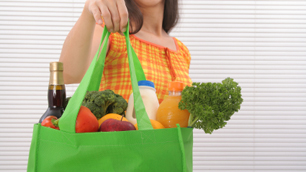
Most of the two dozen bags tested by Thornton Laboratories, on behalf of the Tampa Tribune, had more than five parts per million (ppm) of lead, with some containing more than 100 ppm.
Health Canada says that most toy manufacturers voluntarily conform to European standards that limit the amount of extractable lead in toys to 90 ppm.
The only chain included that has outlets in Canada, Wal-Mart, tested below five ppm for the bags it sells. It's unknown whether any Canadian retailers are selling the same types of reusable bags that tested for higher concentrations of lead.
Thornton labs found that reusable bags with elaborate illustrations were more likely to contain higher levels of lead. Yellow and green paints tend to have higher levels of lead.
Lead not likely to cause short-term harm
Hugh Rodrigues, who owns Thornton Laboratories, told the Tribune that the lead appeared to be in a form that would not easily wash off or be leached into groceries. He said the danger comes over time as the bags wear down and the paint containing lead flakes off and the bag's threads begin to fray.
Reusable bags are growing in popularity as consumers sour on plastic bags that add to landfills and litter the landscape. Reusable bags now make up 10 to 15 per cent of the market, according to retail consulting firm Kurt Salmon and Associates.
Health Canada is currently looking into the lead issue. The public health agency issued an advisory last year warning consumers about potential health hazards associated with reusable bags.
Health Canada's concerns had nothing to do with lead, however, and were concerned about E. coli and other food-borne illnesses.
In 2009, the Canadian Plastics Industry Association found that 30 per cent of the 25 reusable bags it tested had bacterial counts higher than the amount considered safe for drinking water, and 64 per cent of the bags tested had some level of bacterial contamination.



Reader Comments
to our Newsletter